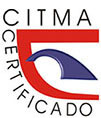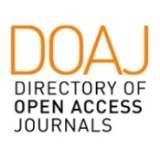The interpretive work of Efraín Loyola: a reference in Cuban flute playing within the charanga orchestra
Keywords:
charanga orchestra, flute, interpretativa work, Efraín LoyolaAbstract
ABSTRACT: Introduction: The objective of this article is to assess the significance of Efraín Loyola's interpretive work within the charanga orchestra. Methods: It is a prescriptive, descriptive analysis based on John Rink's model. This theory encompasses the formal and conceptual analysis of music itself and the interpretative contributions of the performer's subjectivity. Results: It is noticeable the use of positions not contemplated in the traditional methods of flute teaching to obtain homonymous sounds in the different registers. The preference of the wooden flute with five keys on the system flute stands out, giving the interpretation a more accentuated and less strident sound. This makes Efraín Loyola's interpretative work stylistically recognizable as it possesses a personal and distinctive expressiveness. Conclusions: The contribution of Efraín Loyola, first as part in the Aragón orchestra and the later brass bands founded by him, ranges from the particular choice of the instrument, to new positions for its execution, not contemplated for the flute in the traditional teaching methods or in the studies consulted.
Downloads
References
ALÉN, O. (2007). Géneros de la música cubana. Primera parte. Ediciones Adagio.
CABEZAS, B. (2013). Las huellas de un charanguero. (Documental). SONY XDCAM EX1080i (1920×1080 HQ) DVD, Proyecto Espacio. https://www.youtube.com/watch?v= ah6Sj1OJj70.
CARPENTIER, A. (1988). La música y el tiempo. Editorial Letras Cubanas.
EGGEBRECHT, H. H. (1967). Interpretation. En WILIBALD GURLITT (ED.) Riemann Musik Lexikon. B.Schott’s Söhne, 408-409.
ELI, V. & GÓMEZ, Z. (1989). …haciendo música cubana. Editorial Pueblo y Educación.
ESPINOSA, F. (14 de marzo de 2019). Entrevista realizada por Yosvel Torres Medina. Formato .wav
GIRÓ, R. (2007). Diccionario enciclopédico de la música en Cuba. Editorial Letras Cubanas.
GUERRA, M. (2016). Agrupaciones de la música cubana: la charanga. worldwidecubanmusic. www.worldwidecubanmusic.com/2016/02/24/agrupaciones-de-la-musica-cubana-lacharanga/
LEÓN, A. (1981). Del canto y el tiempo. Editorial Pueblo y Educación.
LINARES, M. T. (2007). La música y el pueblo. Ediciones Adagio. LOYOLA, J. (2015). La charanga y sus maravillas. Orquesta Aragón. Ediciones Museo de la Música.
MARTÍNEZ, J. (2016, 18 de diciembre). Efraín Loyola, una leyenda de la música cubana. Granma digital. http://www.granma.cu/cultura/2016-12-18/efrain-loyola-una-leyendade-la-musica-cubana-18-12-2016-21-12-50
OROVIO, H. (1992). Diccionario de la música cubana. Editorial Letras Cubanas.
RAMÍREZ, L. E. (2007). Flauta por flauta (conversación con Efraín Loyola). Ediciones Mecenas.
RINK, J. (2002). Interpretación Musical, Análisis y (¿o?) interpretación. Cambridge University Press.
SÁNCHEZ, F. (2 de abril de 2019). Entrevista realizada por Yosvel Torres Medina. Formato wav.
THOMPSON, F. (5 de octubre de 2019). Entrevista realizada por Yosvel Torres Medina. Formato wav.
WALTERSHAUSEN, H. (1966). El arte de la dirección orquestal, traducción de la 2da. edición (aumentada) en alemán por Carlos Gerhard. Manuales Uteha.
Orquesta Típica Loyola (1960). Pachangueando. Formato: LP. Sello: Maype- MUS-102, Estados Unidos.
Orquesta Loyola (1957). Este amor en chachachá-Escucha el Silbato. Formato 45rpm. Sello puchito-45-338. Cuba.
Orquesta Loyola (1960). Yo te voy a hacer caso-No me hagas sombra, mi socio. Formato 45rpm. Maype-62. Matriz ICD-45-894B. Cuba.
Downloads
Published
How to Cite
Issue
Section
License

This work is licensed under a Creative Commons Attribution-NonCommercial 4.0 International License.
Usted es libre de:
Compartir — copiar y redistribuir el material en cualquier medio o formato
Adaptar — remezclar, transformar y construir a partir del material
La licenciante no puede revocar estas libertades en tanto usted siga los términos de la licencia
Bajo los siguientes términos:
Usted es libre de:
Atribución — Usted debe dar crédito de manera adecuada, brindar un enlace a la licencia, e indicar si se han realizado cambios. Puede hacerlo en cualquier forma razonable, pero no de forma tal que sugiera que usted o su uso tienen el apoyo de la licenciante.
NoComercial — Usted no puede hacer uso del material con propósitos comerciales.
No hay restricciones adicionales — No puede aplicar términos legales ni medidas tecnológicas que restrinjan legalmente a otras a hacer cualquier uso permitido por la licencia.


















